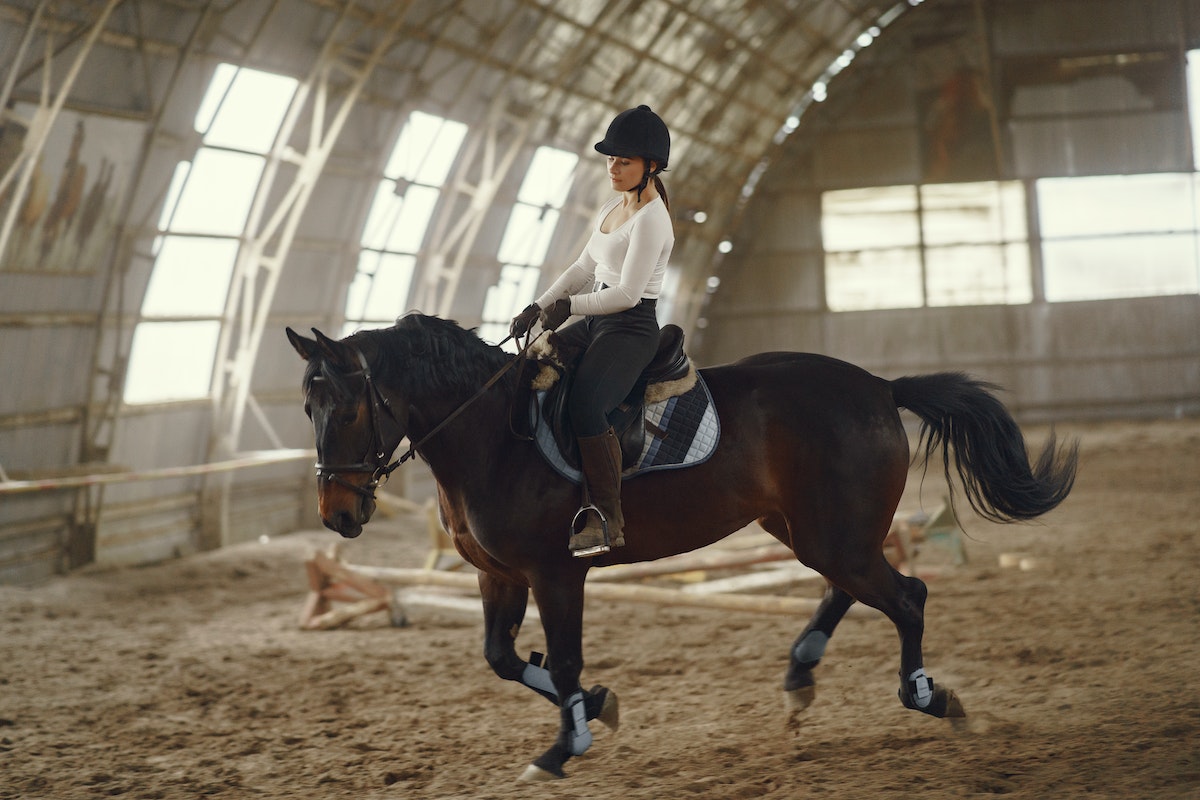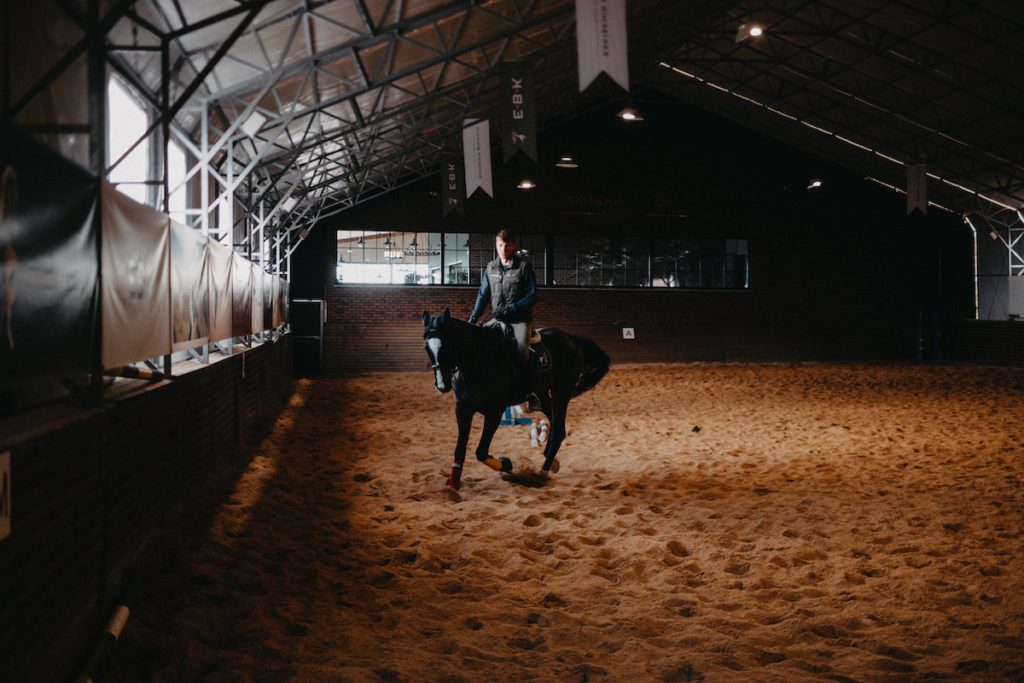
The foundation is, without question, the most critical aspect of building the arena. It goes beyond your floor materials or the type of sand in your arena. No matter what you are using, the trick to maintaining your arena – and footing sitting atop it – is taking care of your foundation.
Whether an open-air arena or an indoor arena, sandy one, the base plays a critical role in supporting your horses. Just like the base of a building is essential in keeping it standing long term, a base allows for foot products within your arena to support the horses correctly over an extended period. The footing needs to be knitted into the base material, meaning that loose footing cannot freely slide around on the base material while horses are working in an arena.
No matter which type of footing you build, three components to the footing layer for a horse arena will be The Base, The Subsurface, and The Topcoat. The top layer of a riding arena is your footing or the ride surface. It is typically made from sand, wood products, rubber, rock dust, or some combination of wood products, adding some topsoil, barn debris, or sawdust. The footing material is just the top layer of a riding arena’s construction and relies on support from the proper foundation and under the foundation.
The ideal footing for a riding arena must provide a springy surface, good grip, proper drainage, and dust-free. The best riding surfaces give your horse enough cushion, good traction (not too slippery or uneven), and little dust. Your ultimate goal is to keep the riding surface footing in good shape, thus decreasing injuries for your horses.
Investing in riding arena footing is a significant investment, and choosing a suitable one is one of the most critical steps to building your horse arena. It will take time and money to build and adequately maintain an arena, but the results are ideal for helping your horse work to its fullest potential while keeping them healthy and well. There is much more to building a horse riding arena than clearing the ground and adding sand or synthetic tack.
A good riding surface helps keep your horses healthier, saving you countless dollars in vet bills. Always rinse the horse’s feet and legs off with water after riding, and scrub your boots off if using an arena with salts on the surface.
If you have tried training on shoddy terrain, or your arena has been neglected for some time, you might have to call a professional to bring the surface up to that level. Generally, if your arena is consistently dusty, and the foundation is well-consolidated and in good shape, then your surface is the issue.

Using sand that has silt and clay will not only cause dust problems but also cause the surface of your arena to become compacted over time. When choosing the appropriate surface material for your arena, sand makes for a great foundation. In addition, sand is usually one of the cheaper materials for your arena floor materials.
You might be familiar with choosing quality footing materials and arena sands that will offer a cushion when jumping and trotting. However, even if two arenas use sand and dirt, the ratios of materials and footing depths will differ depending on traction needs and cushioning. For instance, some arenas require a firmer footing, whereas barrel races or jump events require less of a strong base.
Instead, it would help if your arena had a solid, sturdy bottom layer about half a foot deep, with the top layer between 2.5 inches to 3 inches thick, depending on your preferences and what events you are interested in hosting. A good arena is located far away from any running lanes and is usually built using three layers of materials.
Once you have completed your build, you focus on keeping the upper materials free and spread out evenly across the arena’s surface. The cake layer represents the foundation of your arena, while the frosting is the top layer for the feet.
Water will flow down the bottom layer of padding and then strike a more complex layer, which drains off your arena, depending on whether it is cambered or angled falls. The role of the base fill is to create a solid flat surface for the top filling to hold up on which dressage horses will train.
If the base is built incorrectly, the arena surface will never work like it should, with pools of water and soft spots. The Arena Base will produce uneven training surfaces regardless of the number of times the Arena Drag is used.
If the base of your arena is damaged, you should patch up any holes by pulling back on the floor pads to expose problem areas. If the surface of your arena is beyond saving and needs significant repairs, you will have to remove at least half the existing footing. Your mix of floor coverings and type of arena sand will not be used to fix your arena’s foundation problems.
Your arenas surface must provide enough cushioning while remaining stable. By doing this, you are decreasing the capacity of your arena to compress into one consistent solid layer, which will keep unwanted materials below from rising to the surface. For an ideal dressage arena construction, you must consider how this surface will affect the horse’s joints over time.
